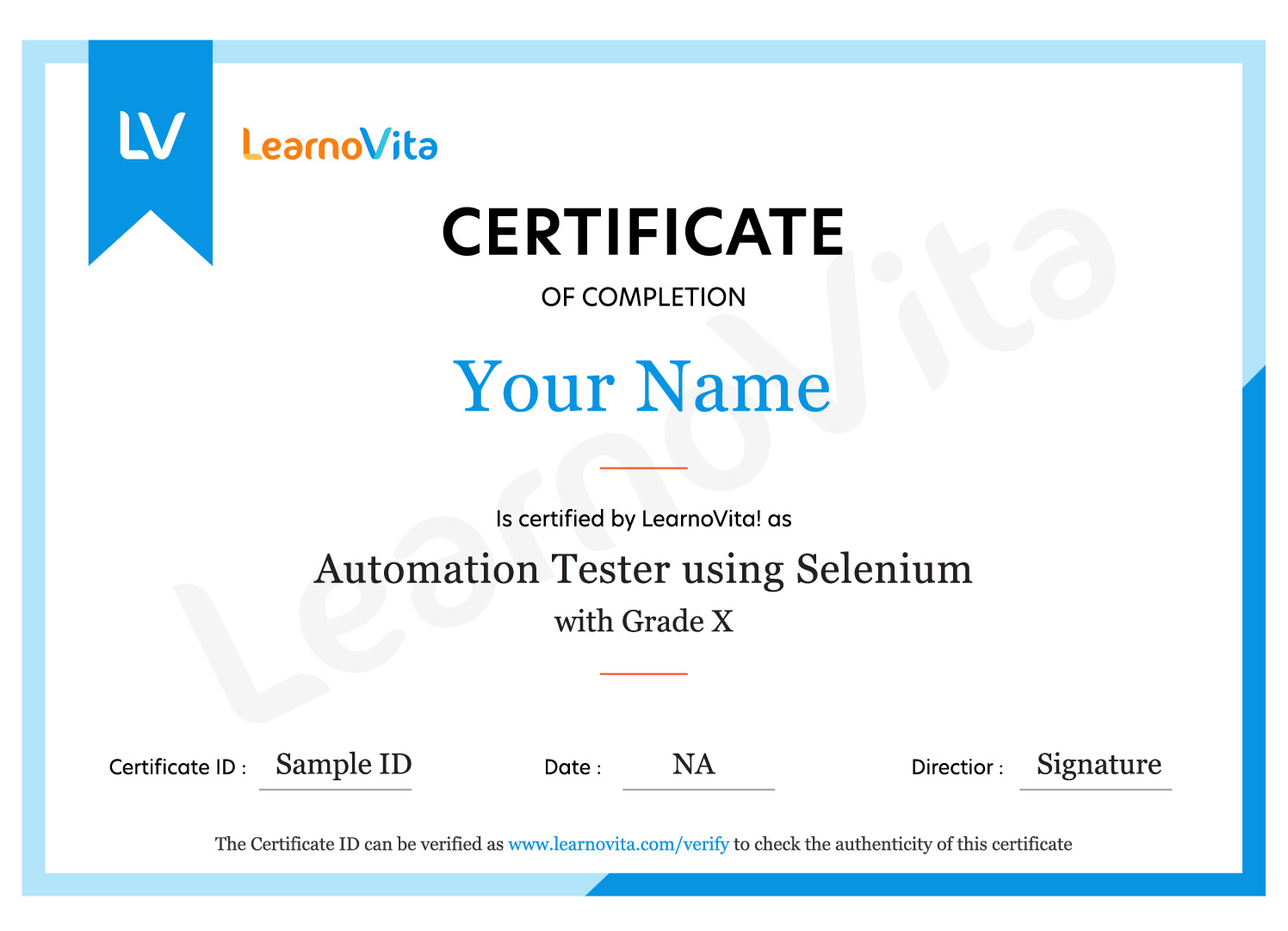An Overview of Embedded Systems Course
Learning the fundamentals of creating, programming, and optimizing embedded applications is the goal of the Embedded Systems Online Training. Microcontrollers, RTOS, peripheral interface, and real-time system development are all covered in this Embedded System Course. Through interactive Embedded Systems Projects students will acquire real-world experience with automation, IoT applications and hardware-software interaction. Students who sign up for this Embedded Systems Online Course will learn about security protocols, firmware development best practices and power optimisation strategies. Embedded Systems Certification Course offers an organized method for learning embedded systems regardless of your level of a experience or desire to improve abilities Build a solid foundation in embedded technology by enrolling up now!
Additional Info
Upcoming Innovation in Embedded System Course
- AI-Powered Systems:
AI integration in embedded systems is revolutionizing automation, enabling smart decision making in real time. Machine learning algorithms are embedded directly into edge devices, reducing reliance on cloud computing. This enhances speed, security and efficiency. Applications include autonomous vehicles, smart appliances and industrial automation. AI-powered microcontrollers are making embedded systems more adaptive Future innovations will focus on low power AI chips for real time data processing.
- Edge Computing:
In processing data closer to the source, edge computing lowers latency and boosts real-time performance. Edge computing-capable embedded systems are essential for industrial, medical, and Internet of Things applications. This trend reduces reliance on the cloud, which aids in bandwidth optimisation. Edge devices powered by AI improve decision-making without requiring cloud connectivity. Processing sensitive data locally improves security and data privacy. Edge AI will be improved for quicker, more effective processing in the future.
- IoT Integration:
As the Internet of Things (IoT) grows, embedded systems are being incorporated into smart homes, businesses, and medical facilities. Device communication is improved via wirelessly connected, low-power microcontrollers. Automation and monitoring are enhanced by sophisticated sensors and real-time analytics. Predictive maintenance and remote control are made possible by IoT-based embedded devices. Improved security measures are essential for thwarting online attacks AI driven automation and energy efficiency will be the main topics of future IoT advancements.
- 5G Connectivity:
5G networks' ultra low latency and fast data throughput are revolutionising embedded systems. Reliable 5G connectivity is beneficial for driverless vehicles, smart cities, and industrial automation. 5G will be used by embedded devices to provide remote control and communication in real time. Mission-critical applications operate more efficiently when networks are more reliable. Massive deployments of IoT devices are supported by embedded systems with 5G capabilities Future developments will optimise power usage for 5G gadgets that use less energy.
- Enhanced Security:
Security for embedded systems is becoming more important as cyber threats change. Secure boot and TPM (Trusted Platform Module) are two examples of hardware-based security technologies that are becoming increasingly popular. Protocols for authentication and encryption are combined to provide safe data transfer. Real-time cyberattack detection and prevention is made possible by AI-driven security systems. Vulnerability protection is ensured by secure firmware updates. Lightweight cryptography for devices with limited resources will be the main focus of future developments.
- Low-Power Systems:
In recognition of embedded systems that run on batteries, energy efficiency is essential System lifespan is improved by recent developments in ultra low power microcontrollers. Energy harvesting and dynamic voltage scaling are two methods that are becoming more and more common. IoT and wearable device performance is enhanced by power-efficient embedded systems Power management powered by AI optimises energy use according to usage trend Future advancements will aim to create embedded gadgets that are self sufficient and use less energy.
- RISC-V Adoption:
The development of embedded systems is changing as a result of the open-source RISC-V processor architecture. It provides cost-effective, scalable, and adaptable solutions for a range of applications. Because it is open-source, it can be customised and optimised for certain use situations. RISC-V is being used by businesses more and more for industrial, automotive, and Internet of Things automation. Because of its improved performance and lower power consumption, RISC-V is a good substitute for proprietary architectures Widespread industry usage in the future will spur embedded computing innovation.
- Autonomous Systems:
The combination of AI & machine learning is leading to the emergence of self-learning embedded systems. Without human assistance, these systems adjust to their surroundings and become more efficient. Autonomous vehicles, robots, and drones depend on embedded AI to make decisions in real time. In industrial automation, autonomy is improved by sophisticated sensors and predictive analytics. Faster, more intelligent answers are guaranteed by real-time data processing at the edge Future advancements will concentrate on embedded autonomy driven by AI in vital industries.
- Wearable Tech:
Considering the integration of embedded systems for fitness tracking and health monitoring wearable technology is expanding quickly. Heart rate, blood sugar & other vital signs can be monitored with the use of embedded biosensors. Analytics driven by AI offer individualised health advice. The user experience is improved when data is transmitted in real time to cloud or mobile applications. Extended battery life for continuous monitoring is ensured by the low-power architecture. Future developments will improve biomedical embedded devices' precision and miniaturisation.
- Quantum Integration:
High-performance embedded applications are anticipated to be impacted by quantum computing. Complex issues will be resolved far more quickly by quantum processors than by conventional embedded systems. Quantum computing will be used in future embedded AI models to optimise them quickly. Data security in vital applications will be improved by secure quantum encryption. Quantum integration, though still in its infancy, will revolutionise computer power. For specific applications, research is being done to create hybrid embedded-quantum computing models.
Exploring the Tools and Techniques of Embedded System Course
- Keil uVision:
Keil uVision is a widely used IDE for embedded programming, especially for ARM based microcontrollers It offers an integrated debugging environment for real time testing The tool supports C/C++ programming, enabling efficient firmware development. Advanced simulation features allow error detection before hardware deployment. Its user-friendly interface enhances productivity for beginners and experts alike. Keil remains a preferred choice for embedded system professionals.
- Arduino IDE:
Arduino IDE is an open-source platform for programming microcontrollers like Arduino boards It supports C/C++ with a simple interface for writing, compiling and uploading code The tool includes built-in libraries for sensors, motors and communication modules. Its serial monitor helps debug and analyze data in real time The vast Arduino community provides extensive resources and project ideas This makes it ideal for beginners in embedded systems.
- Embedded C Programming:
Embedded C is a specialized extension of C optimized for microcontroller based applications It provides direct hardware access, enabling real time performance and efficiency The language supports bitwise operations, memory management and hardware interrupts. Embedded C is widely used in firmware development for IoT, automotive and medical devices Efficient coding ensures minimal memory usage and optimal execution speed Mastering Embedded C is crucial for embedded system engineers.
- RTOS (Real-Time Operating System):
RTOS manages task scheduling, resource allocation and real-time processing in embedded applications It ensures predictable response times, making it ideal for critical systems Popular RTOS options include FreeRTOS, VxWorks and Micrium Multitasking capabilities improve system efficiency by running multiple processes simultaneously RTOS enhances system stability, power management and performance optimization It is commonly used in robotics, automotive and industrial automation.
- JTAG Debugging:
JTAG (Joint Test Action Group) is hardware debugging interface used for testing embedded devices It allows developers to debug firmware directly on microcontrollers and processors JTAG provides real time insights into register values, memory access and CPU execution It helps in diagnosing hardware faults and optimizing system performance. Many embedded tools, like OpenOCD and Segger J-Link, support JTAG debugging. This technique is essential for troubleshooting embedded applications.
- SPI, I2C, and UART Communication:
These communication protocols enable data exchange between microcontrollers and peripheral devices SPI (Serial Peripheral Interface) is a high speed protocol used in sensors and displays I2C (Inter-Integrated Circuit) supports multi device communication over a two wire interface UART (Universal Asynchronous Receiver-Transmitter) is widely used for serial communication These protocols ensure seamless connectivity in IoT, automotive and industrial applications Understanding them is key to designing efficient embedded systems.
- MATLAB for Embedded Systems:
MATLAB is used for simulation, modeling and algorithm development in embedded applications It helps in analyzing sensor data, optimizing control systems and signal processing MATLAB integrates with hardware like Arduino and Raspberry Pi for real-time testing Engineers use it to design embedded algorithms before deployment. Simulink an extension of MATLAB simplifies graphical modeling of embedded systems It is widely used in automotive, robotics and aerospace applications.
- Git for Version Control:
Git is powerful tool for managing embedded software development projects It tracks changes in source code allowing collaboration among developers. Git ensures code stability with version history and rollback features It supports branching and merging for efficient code integration Platforms like GitHub and GitLab enhance teamwork in embedded system projects Using Git is essential for maintaining code consistency and collaboration.
- Oscilloscope and Logic Analyzer:
Oscilloscopes measure voltage signals, helping analyze embedded system performance Logic analyzers capture and decode digital signals for debugging communication protocols These tools assist in identifying timing issues and signal distortions in circuits They are essential for troubleshooting SPI, I2C, UART and PWM signals Modern oscilloscopes support real time data visualization and analysis Engineers use them to optimize embedded system reliability and efficiency.
- Docker for Embedded Development:
Docker simplifies embedded system development by providing containerized environments. It ensures consistency across development, testing and deployment phases Containers include all dependencies reducing compatibility issues Developers use Docker for cross compilation and firmware testing It enhances scalability making embedded software deployment more efficient Docker is increasingly being adopted in DevOps driven embedded workflows.
Essential Roles and Responsibilities of Embedded System Course
- Embedded Systems Engineer:
Designs develops and tests embedded software and firmware for microcontrollers and processors Works with real time operating systems to ensure efficient task scheduling Develops drivers, communication protocols and interfaces for hardware components. Ensures optimization of code for power efficiency and performance. Troubleshoots and debugs embedded applications using tools like JTAG and logic analyzers. Collaborates with hardware engineers for seamless integration. Maintains documentation and follows industry standards for embedded development.
- Firmware Developer:
Writes low-level code for microcontrollers and embedded processors to control hardware functions. Develops, tests, and optimizes firmware for reliability and efficiency. Implements communication protocols such as SPI, I2C, and UART. Works with memory management and power optimization techniques. Debugs firmware using oscilloscopes, debuggers, and simulators. Collaborates with hardware and software teams to ensure smooth integration. Keeps up with industry trends and advancements in embedded technology.
- Embedded Software Developer :
Develops application level software for embedded systems using C, C++, or Python Works with RTOS and device drivers to manage hardware components Implements algorithms for real time data processing and automation Ensures system stability, reliability and low power consumption. Uses debugging tools like GDB, Keil and MATLAB for software testing Integrates software with hardware for efficient system functionality Documents code and follows best practices for maintainability.
- Embedded Hardware Engineer:
Designs and develops circuit boards, microcontroller based systems and sensor interfaces. Selects components such as microcontrollers, memory and power management units. Ensures proper signal integrity and power distribution in embedded designs. Works with PCB design tools like Altium, KiCad or Eagle. Tests and validates hardware using oscilloscopes, logic analyzers, and spectrum analyzers Troubleshoots circuit issues and optimizes performance. Collaborates with software teams for seamless hardware-software integration.
- Embedded Security Engineer :
Focuses on securing embedded systems against cyber threats and vulnerabilities Implements encryption, authentication and secure boot mechanisms Develops secure firmware and hardware level security protocols Conducts penetration testing and vulnerability assessments on embedded devices. Ensures compliance with security standards such as ISO 26262 and IEC 62443. Works with secure coding practices to prevent exploits and attacks. Collaborates with teams to integrate security into the embedded system lifecycle.
- IoT Embedded Engineer:
Develops embedded systems for Internet of Things applications in smart devices Works with wireless communication protocols like BLE, Zigbee, and LoRa. Implements cloud connectivity for remote data access and control. Optimizes power consumption for battery-operated IoT devices Ensures real time data collection and analytics for automation Uses tools like MQTT, CoAP and edge computing frameworks Designs scalable and secure IoT architectures for embedded solutions.
- Automotive Embedded Engineer:
Develops embedded systems for automotive applications, including ECU (Engine Control Unit) Works with industry standards like AUTOSAR and CAN protocol for communication Ensures real time performance and reliability for vehicle safety systems Implements ADAS (Advanced Driver Assistance Systems) and infotainment solutions. Conducts testing and validation for compliance with automotive safety standards. Works with embedded AI and sensor fusion for autonomous driving. Collaborates with automotive OEMs for system integration.
- Robotics Embedded Engineer:
Designs embedded control systems for robotics applications Works with motor controllers, sensors and actuators to enable robotic movement. Implements AI-based algorithms for autonomous navigation and decision-making. Develops real-time control systems for robotic automation. Ensures low-latency and high-precision performance in robotic operations. Works with ROS (Robot Operating System) for embedded robotics applications. Collaborates with mechanical and software engineers for integrated robotic solutions.
- Embedded AI Engineer:
Integrates artificial intelligence into embedded systems for smart applications. Develops machine learning models optimized for edge devices and low-power hardware. Works with AI accelerators like TensorFlow Lite, Edge TPU, and NVIDIA Jetson. Implements AI-driven decision-making for real-time processing in embedded systems. Optimizes AI models for minimal latency and power consumption. Ensures embedded AI applications are secure and scalable. Works on AI-driven automation for industries like healthcare, automotive, and IoT.
- Embedded Testing Engineer:
Conducts functional, performance and stress testing on embedded systems Develops automated testing frameworks for firmware validation. Uses debugging tools like oscilloscopes, JTAG, and protocol analyzers. Ensures compliance with the industry standards and safety regulations. Works with hardware and software teams to identify and fix defects. Develops test cases for real time performance analysis Documents testing procedures and provides recommendations for system improvement.
Top Companies Hiring Embedded Systems Professionals
- Intel Corporation:
Intel is a global leader in semiconductor and embedded computing solutions It develops advanced microcontrollers, processors and AI based embedded applications The company focuses on automotive, IoT and industrial automation solutions. Intel offers roles in embedded firmware, hardware design and real time system development Engineers work on cutting edge technologies like edge computing and AI accelerators It provides excellent career growth in embedded software and hardware engineering.
- Texas Instruments:
Texas Instruments specializes in semiconductor manufacturing and embedded processing solutions It designs microcontrollers, DSPs (Digital Signal Processors) and power management ICs. TI’s embedded engineers work on applications in automotive, healthcare and industrial automation. The company emphasizes innovation in low-power embedded systems TI offers career opportunities in firmware, hardware design and system integration It is known for fostering research and development in embedded technologies.
- Qualcomm:
Qualcomm is a pioneer in embedded wireless communication and mobile chipset development. It develops embedded processors for smartphones, IoT devices and automotive applications. Engineers at Qualcomm work on real-time embedded software, DSPs, and 5G integration. The company focuses on AI-driven embedded solutions and energy-efficient chipsets. Qualcomm provides excellent R&D opportunities in embedded Linux, RTOS, and ARM-based systems. It is a top choice for embedded system professionals specializing in wireless technologies.
- NVIDIA:
NVIDIA leads in AI powered embedded computing for robotics, automotive and deep learning applications It develops high performance embedded GPUs for AI acceleration. Embedded engineers work on Jetson modules for edge computing and autonomous systems. The company focuses on real-time processing for automotive ADAS and AI-driven automation. NVIDIA provides roles in firmware development, embedded AI, and deep learning optimization. It offers cutting-edge projects in AI-driven embedded system design.
- Bosch:
Bosch is global leader in automotive and industrial embedded systems. It designs embedded solutions for smart vehicles, automation, and IoT applications. Bosch engineers work on firmware, real-time control systems, and automotive ECU development. The company emphasizes embedded security and AI-driven automation. Bosch offers opportunities in robotics, ADAS, and smart home automation. It is known for its innovation in connected embedded technologies.
- Samsung Electronics:
Samsung develops embedded solutions for consumer electronics, IoT, and mobile devices. It works on ARM based microcontrollers, RTOS and smart home automation Engineers focus on optimizing power consumption and enhancing embedded security Samsung provides opportunities in firmware development, embedded AI and system integration The company invests in next gen embedded technologies like wearable devices and smart TVs It offers a strong career path in embedded systems engineering.
- STMicroelectronics:
STMicroelectronics is a leading manufacturer of microcontrollers and semiconductor solutions It provides embedded solutions for automotive, industrial and IoT applications. Engineers work on real time embedded systems, low power processing and sensor integration STMicro emphasizes innovation in automotive safety and AI-based embedded processing. It offers careers in firmware, hardware design, and semiconductor research. STMicro is known for its cutting-edge microcontroller-based development platforms.
- Apple Inc.:
Apple develops embedded systems for iPhones, iPads, MacBooks and wearable devices Its embedded engineers work on ARM based processors, real-time firmware and secure boot mechanisms. The company focuses on power efficient embedded solutions for mobile and AI applications Apple offers roles in embedded security, system optimization, and low-level driver development Engineers work on next gen SoCs (System on Chips) and AI driven embedded designs. It provides an innovative work environment for embedded professionals.
- Tesla:
Tesla designs advanced embedded systems for electric vehicles and autonomous driving. Engineers work on automotive ECUs, ADAS, and embedded AI-driven decision-making. The company focuses on real-time data processing for self-driving technology. Tesla offers opportunities in firmware, sensor integration, and automotive security. Engineers develop AI-powered embedded solutions for battery management and infotainment systems. It is a leading employer for embedded professionals in automotive innovation.
- Honeywell:
Honeywell specializes in embedded solutions for aerospace, industrial automation and IoT applications It develops firmware and embedded software for real time control systems. Engineers work on avionics home automation and energy efficient embedded applications. Honeywell focuses on security, reliability and AI driven automation. The company provides career opportunities in firmware, real-time OS development and IoT integration It is a top employer for embedded professionals in industrial and aerospace sectors.



















 Regular 1:1 Mentorship From Industry Experts
Regular 1:1 Mentorship From Industry Experts




